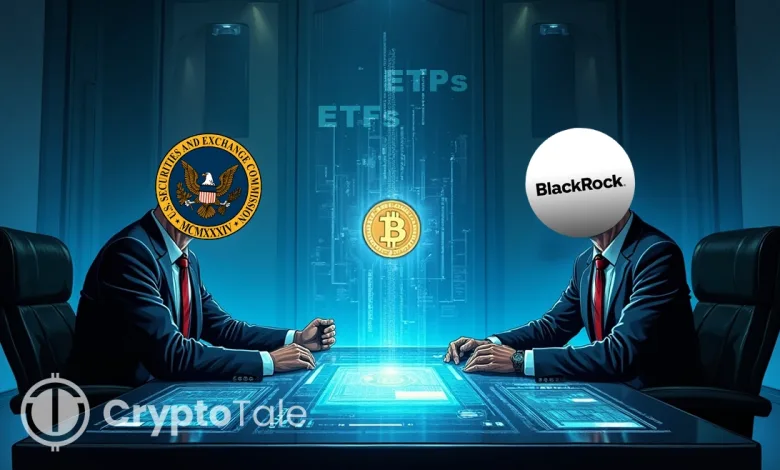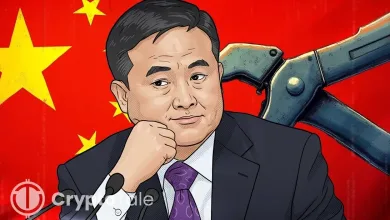BlackRock Meets SEC to Shape Future of Crypto Investments

- BlackRock aims to include staking in future crypto funds if proper guidances are provided.
- The firm wants token-based assets to follow rules that work like traditional laws.
- Talks also covered better paths for crypto product approval and safe use of options.
In a pivotal move, BlackRock met with the SEC’s Crypto Task Force to discuss staking, tokenization, and the evolving standards for crypto ETF approvals. The asset management firm highlighted its growing interest in digital assets, signaling institutional momentum behind crypto market integration.
Institutional Crypto Products Under the Microscope
At the meeting, BlackRock outlined its digital asset offerings: the iShares Bitcoin Trust (IBIT), Ethereum Trust (ETHA), and BUIDL—a USD institutional liquidity fund. These products represent its current foray into token-based investment infrastructure, aiming to align with regulatory expectations and investor demand.
Further, BlackRock addressed staking, an area drawing regulatory scrutiny. Representatives proposed enabling staking capabilities within ETPs, raising questions about compliance under existing securities frameworks. Their input emphasized balancing innovation with investor protection.
The dialogue further extended into tokenization, where BlackRock advocated for clear guidelines under federal securities laws to advance asset digitization. They suggested regulatory alignment would allow tokenized instruments to function safely within existing market structures.
Approval Standards and Options Market Expansion
Another major agenda was ETP approval criteria. BlackRock requested clarification on standards under Section 6(b) of the Exchange Act, discussing the potential for an interim framework that could guide issuer conduct before permanent rules are adopted. These points aim to streamline approval pathways for crypto-linked products.
Moreover, BlackRock discussed the potential for options on crypto ETPs. Their proposal included the establishment of position and exercise limits based on liquidity benchmarks. This effort targets a safer expansion of derivatives tied to crypto-based funds, ensuring alignment with broader market risk controls.
The meeting participants from BlackRock included regulatory, legal, and digital asset leaders. Their collaboration with the SEC reflects a significant push to shape the regulatory landscape of crypto finance.
Related: BlackRock CEO Warns of Recession Amid Trump’s Tariff Moves
A Strategic Shift or Regulatory Gamble?
Does this signal a turning point for institutional crypto adoption, or simply strategic posturing amid regulatory uncertainty?
By engaging directly with federal regulators, BlackRock may influence future crypto frameworks. Their efforts to shape staking, tokenization, and ETP rules demonstrate a strong bid to lead in digital asset integration. The Crypto Task Force’s response could shape the next chapter in U.S. financial innovation.
The SEC’s engagement by BlackRock provides an excellent industry example for institutional adoption that presses other firms to investigate the possibility of crypto integration. Relying on regulatory transparency, several corporations are eyeing the digital asset space via staking, tokenization, and ETF structures could pave the way for broader integration of digital assets across the global financial system.





